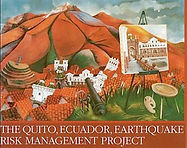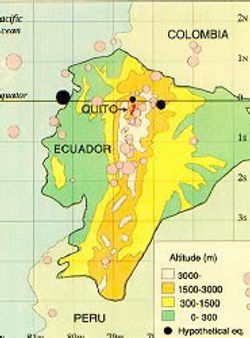Location
Date
Date
Date
Date
Date
Date
Location
Date
Date
Date
Date
Date
Date
Newsletter
Quito Earthquake Risk Management
Location: Quito, Ecuador
Time frame: 1992 - 1994
The Problem

Over the previous 250 years, Quito, Ecuador has experienced several earthquakes with ground shaking intensities so strong that standing became difficult. All of these events had occurred when Quito was significantly less populated and developed than it was by the year 1991. Modern Quito, the capital of Ecuador, needed an assessment of its risk and a plan to reduce that risk in order to prepare for a major earthquake.
GHI’s Response
In September 1992, an eighteen-month project began to assess the earthquake hazard and risk to Quito, and, using earthquake scenarios, to design sustainable programs to mitigate that risk.
A multi-national group of seismologists, geologists, soils engineers, structural engineers and city planners developed, assembled and analyzed the technical data. This enabled them to estimate three likely future earthquake events in Ecuador, including distribution of earthquake damage in Quito.
This information was then used to design an earthquake scenario. Vividly written in non-technical language, the scenario raised public awareness of the earthquake threat and motivated government, business and community leaders to develop mitigation projects.
A group of international and Ecuadorian specialists from business and industry, city government, urban planning, emergency services and infrastructure then developed recommendations within their fields of expertise for reducing earthquake risk in Quito.

Map of Ecuador showing the locations of past events and the hypothetical earthquakes.
Long-Term Outcome
-
An Earthquake Safety Advisory Board was established to develop, implement, monitor and regularly update a comprehensive earthquake risk reduction program for Quito.
-
The Quito School Earthquake Safety Project, initiated by GHI and Ecuador’s Escuela Politécnica Nacional in December 1994, created retrofit designs for a representative sample of high-risk public schools in Quito. The relatively inexpensive process of identifying high-risk schools and designing their retrofits generated sufficient local funding to pay for retrofit building construction.
-
Interest generated by the Earthquake Risk Management and School Retrofit Projects led to national legislation in Ecuador that significantly strengthened building codes for public and private structures.
Documentation
Funded by OYO Corporation, Escuela Politecnica Nacional, IlustreMunicipio de Quito, and ORSTROM
